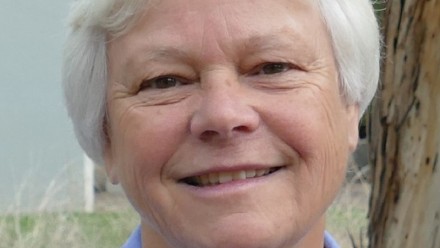PS Transcendence Webinar Series: Quantitative links between gas exchange of leaves and photosynthetic biochemistry
Abstract - Mathematical models of leaf photosynthesis provide a mechanistic base for predicting and assessing changes in photosynthetic CO2 fixation in different environments and provide a means of scaling predictions from leaves to canopies and regions. The components of the C3 and C4 photosynthetic apparatus are finely balanced and environmental perturbations frequently result in parallel variations of many of the components. This often makes it difficult to distinguish between causal and correlative links. To study the regulation of C3 and C4 photosynthesis we have used molecular techniques to disturb these correlative links by generating transgenic plants of Nicotiana tabacum (a C3 species) and Flaveria bidentis or Setaria viridis (two C4 species) where the photosynthetic metabolism has been impaired with RNA antisense constructs to various photosynthetic proteins. These molecular manipulations result in plants with a range of reductions in the amounts of the target protein, making this approach ideally suited to a quantitative analysis of photosynthetic processes. Together with other tools such as measurements of carbon isotope discrimination we have been able to test the photosynthesis models to provide better insight into photosynthetic processes in different environments. We are now using these models as guides to improve photosynthesis to enhance crop yields.
Biography - Susanne von Caemmerer is Emeritus Professor at The Australian National University and past Deputy Director of the ARC Centre of Excellence for Translational Photosynthesis. She is internationally recognized for her research on photosynthetic modelling, analysis of photosynthesis by genetic manipulation, and research on stable isotope fractionation in plants.
Susanne obtained her BA (Honours) in Pure Mathematics in 1976 at the Australian National University (ANU) and her PhD in Plant Physiology in 1981, also at ANU. She has worked across scales in biochemistry, molecular biology and whole plant physiology combining mathematical modelling approaches with experimental verification. She co-developed what is arguably the most widely used biochemical model in plant biology – the Farquhar, von Caemmerer and Berry model of C3 photosynthesis. She then went on to develop an equally widely used model of C4 photosynthesis.
Her current research interest is focused on improving leaf photosynthesis for crop improvement. She is a member of the C4 Rice Consortium, a group of multidisciplinary scientists from around the world working together to insert the C4 photosynthetic pathway into rice for increased food production in the Asia pacific region (https://c4rice.com/). She is also a member of RIPE (Realizing Increased Photosynthetic Efficiency). This international team is working to enhance C3 photosynthesis in crops to help small hold farmers in Africa (http://ripe.illinois.edu).






